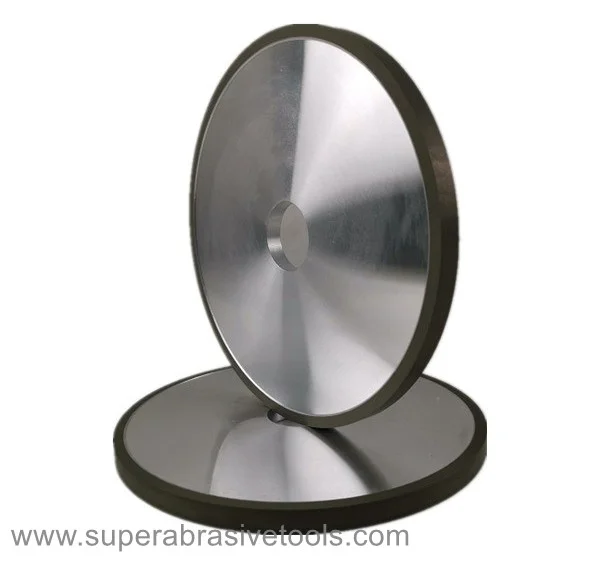The vitrified CBN wheel is unrivaled when it comes to modern superabrasive tools in terms of its durability, cutting efficiency, and thermal stability. Nevertheless, the very best CBN grinding wheel will still be dependent on proper care and optimized operation to achieve the longevity that is possible with such a wheel.
This article provides authoritative evidence-based information on extending the life of a vitrified CBN wheel. It reviews wear mechanics, good care, and documented procedures from the automotive, aerospace and tooling sectors.
Unlock more insights in our related post – discover what you may have missed!
What Is a Vitrified CBN Wheel?
A vitrified CBN (Cubic Boron Nitride) wheel is a superabrasive grinding tool that uses a vitrified bond — a glass-like ceramic matrix — to hold CBN grains firmly in place.
Unlike resin or metal bonds, the vitrified structure provides:
- High rigidity and porosity,
- Excellent heat dissipation,
- Consistent wheel geometry,
- Precise dimensional control, even during long grinding cycles.
Expert Note:
“Vitrified CBN wheels are the backbone of modern precision grinding. Their open structure and thermal resistance allow for aggressive material removal while maintaining superior surface finish.”
— Dr. L. Howard, Materials Science Journal, 2024.
Vitrified CBN wheels are widely used for grinding hardened steel, alloy steels, cast iron, and tool steels, making them indispensable for manufacturers seeking both accuracy and productivity.
Why Extending CBN Wheel Life Matters
A vitrified CBN wheel is an investment — one that can deliver exceptional returns if maintained correctly.
Benefits of Prolonged Wheel Life
- Reduced operational cost: Lower wheel replacement frequency means higher ROI.
- Consistent quality: Stable cutting edges produce uniform finishes.
- Higher machine uptime: Less downtime for dressing or changeovers.
- Sustainability: Reduced waste aligns with eco-friendly manufacturing goals.
According to Machining Economics Quarterly (2023), effective CBN wheel maintenance can cut abrasive costs by up to 35% annually while maintaining tolerance accuracy.
How to Extend the Life of a Vitrified CBN Wheel
Below are eight expert-recommended strategies proven to extend the operating life of vitrified CBN wheels in industrial settings.
1. Optimize Wheel Speed and Feed Rate
CBN wheels are designed for specific peripheral speeds, usually in the range of 80–125 m/s, depending on wheel diameter and material.
Exceeding these parameters causes premature wear and heat generation.
Best Practice:
- Check the manufacturer’s recommended operating speed.
- Match wheel speed, work speed, and feed rate to maintain balanced cutting pressure.
- Avoid aggressive infeed that overloads CBN grains.
For example, a vitrified CBN wheel running at 100 m/s with an optimized feed rate can last 25–40% longer than a wheel subjected to excessive infeed, according to SuperAbrasive’s field test data (2024).
2. Use Proper Coolant Flow and Filtration
Coolant management is the single most important factor in extending CBN wheel life.
Insufficient or misdirected coolant leads to localized heating, grain fracture, and bond erosion.
Recommendations:
- Maintain laminar coolant flow directly into the grinding zone.
- Use high-pressure nozzles positioned tangentially to the wheel.
- Implement fine filtration (≤10 microns) to remove metallic swarf.
A clean coolant system prevents abrasive loading and thermal cracks, both common causes of premature wheel wear.
SuperAbrasive engineers emphasize that even a 10% reduction in coolant contamination can improve vitrified CBN wheel life by up to 20%.
3. Dress the Wheel Correctly
Even vitrified CBN wheels require periodic dressing to restore cutting sharpness and maintain shape accuracy.
Key Dressing Tips:
- Use a diamond dressing tool or rotary dresser suited for vitrified bonds.
- Dress at the proper infeed rate (typically 0.01–0.02 mm per pass).
- Avoid excessive dressing depth, which wastes valuable abrasive material.
- Perform intermittent light dressing rather than deep, infrequent ones.
Industry Data:
In high-precision gear grinding applications, properly dressed CBN wheels retain over 95% cutting efficiency after 50 cycles.
4. Prevent Loading and Glazing
Loading occurs when workpiece material embeds into the CBN wheel pores.
Glazing happens when the abrasive grains dull and smear over, reducing cutting action.
Prevention Methods:
- Use appropriate coolant concentration and flow.
- Dress the wheel lightly when signs of glazing appear.
- Maintain optimal grinding parameters to minimize heat buildup.
- For sticky or gummy materials, use open-pore vitrified wheels for better chip clearance.
5. Control Grinding Pressure
Applying excessive grinding pressure accelerates abrasive wear and thermal damage.
Too low a pressure, however, causes rubbing rather than cutting.
Balancing Tip:
- Adjust the infeed incrementally.
- Monitor grinding power consumption — a rise often indicates dull grains or excessive force.
- Implement in-process monitoring systems (power or acoustic sensors) to ensure consistent cutting conditions.
A steady power curve generally reflects stable wheel performance and optimal wear rate.
6. Choose the Right Bond and Grit Size
Not all vitrified CBN wheels are the same. The bond hardness and grit size significantly affect wear behavior and grinding efficiency.
| Application | Recommended Grit Size | Bond Hardness |
| Rough Grinding | B76–B91 | Medium |
| Semi-Finish Grinding | B64–B76 | Medium-Hard |
| Fine/Finish Grinding | B46–B64 | Hard |
Choosing the correct combination ensures balanced wear and consistent performance throughout the tool’s life.
Visit www.superabrasivetools.com to explore SuperAbrasive’s vitrified CBN wheel series, engineered for diverse grinding applications including tool steel, cast iron, and bearing components.
7. Maintain Machine Alignment and Rigidity
A misaligned spindle or worn bearing introduces vibration — the silent killer of grinding wheel life.
Maintenance Guidelines:
- Check spindle runout regularly (≤0.002 mm recommended).
- Ensure workholding fixtures are stable and vibration-free.
- Calibrate axes alignment at least twice a year.
Vibration leads to uneven wear patterns, wheel chipping, and reduced dimensional accuracy.
8. Implement Scheduled Wheel Rotation and Storage Protocols
For users operating multiple wheels, rotation schedules prevent uneven usage and aging.
Storage Tips:
- Store vitrified CBN wheels in a cool, dry area.
- Avoid stacking heavy wheels that could cause deformation.
- Label wheels with usage hours and dressing cycles to track wear consistency.
“Wheel management is a simple yet often overlooked practice. A properly stored and rotated CBN wheel maintains geometry and cutting performance far longer,” notes SuperAbrasive’s Product Engineer, 2025.
When Should You Replace a Vitrified CBN Wheel?
Even with meticulous care, CBN wheels eventually wear out. Watch for these signs:
- Visible cracks or surface fractures.
- Excessive dressing frequency required.
- Declining surface finish or dimensional accuracy.
- Reduced grinding efficiency despite optimal settings.
If these issues persist, replacing the wheel ensures safety and consistent machining quality.
Future Trends in CBN Wheel Longevity
The next evolution of vitrified CBN wheels lies in hybrid bonding and nano-engineered grain coatings.
Manufacturers are developing self-sharpening CBN wheels that can regenerate sharp cutting edges through micro-fracture control.
According to Abrasives Market Outlook (2025), hybrid vitrified bonds are projected to increase tool life by 30–40% compared to conventional designs — signaling the next leap in grinding technology.
SuperAbrasive continues to pioneer advancements in vitrified and hybrid CBN technology, supporting industries that demand both precision and productivity.
About SuperAbrasive
SuperAbrasive, established in 2011, has become a recognized manufacturer of superhard grinding and honing tools.
In 2017, the company launched its own production facility, ensuring complete quality control and precision engineering across product lines.
Our Product Range Includes:
- Grinding Wheel Series: Diamond grinding wheels, CBN grinding wheels
- Honing Tools: Honing stones, mandrels, honing heads
- Superhard Coated Abrasives: Sanding belts, flap discs, abrasive wheels
- Optical Glass Tools: Diamond pellets and precision grinding wheels
SuperAbrasive’s products are exported worldwide — including to the USA, Europe, Indonesia, and Thailand — delivering excellence in both performance and reliability.
Conclusion
A vitrified CBN wheel is built to deliver unmatched precision and durability, but its longevity depends on how it’s maintained. By following these pro tips – optimizing speeds, dressing regularly, ensuring coolant quality, and maintaining machine alignment – you can maximize tool life, reduce costs, and maintain consistent surface finish quality.
Don’t miss this featured post – handpicked for your growth and success.







